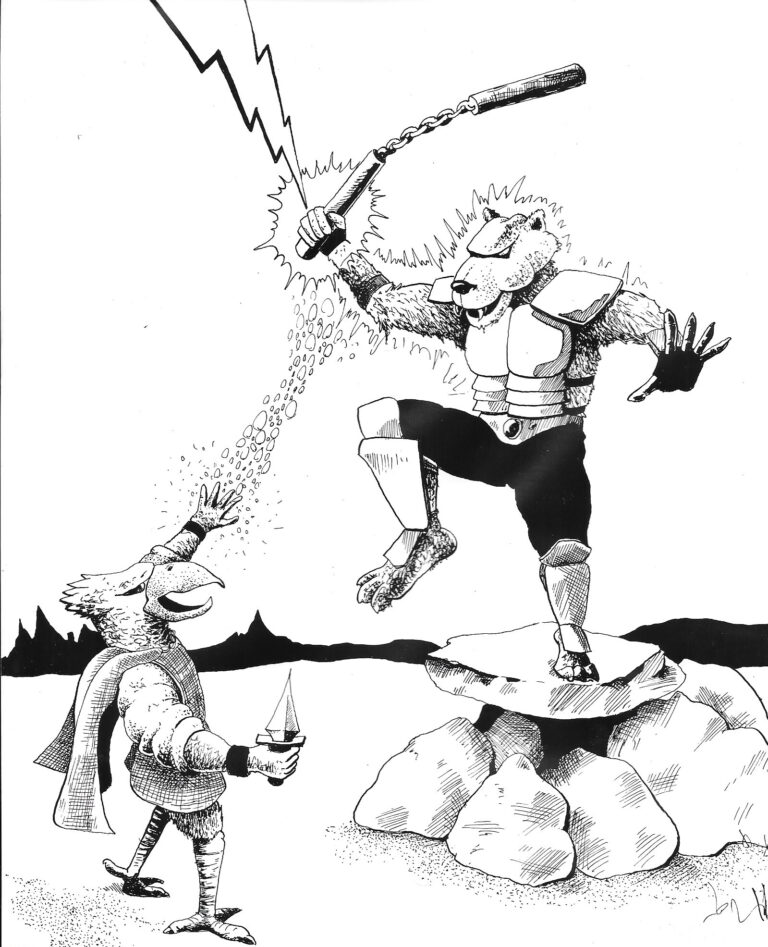Note that Kobold Press provided a complimentary PDF copy of their latest release to shadomain.com for use in this review..
By Shadomain Staff
Campaign Builder Cities & Towns is a new book from Kobold Press compatible with Dungeons & Dragons 5e. The book contains helpful advice for Dungeon Masters on how to create a fantasy city. It is aimed at DMs who are building their own fantasy settings but it also contains new backgrounds, sub classes and spells which would be of interest to players as well.
This book is 240 pages and retails for $49.99 USD in hardcover. It’s available for pre-order now. It includes a city “character” sheet which is a helpful tool in building a city.
The cover is well done as are the color internal illustrations. The typography is well designed, making use of an interesting typeface for the section headlines. There are also impressive color battle maps that GMs could use in their cities.
The book begins with five questions for GMs to ask themselves when beginning to create a city. This is quite helpful as in many cases GMs would love to create this sort of civilization but aren’t sure where to start. This includes descriptions of many types of governments. There’s a lengthy section on the use of magic in the city. These points are useful not just in cities, but in the creation of any setting in games that use magic. The text helps you decide how magic influences the situation.
Chapter two contains sections on geography and climate. There’s also a section on architecture which impressively discusses the relationship between architecture and the natural world surrounding the setting, the local culture and technology. There’s useful suggestions for the most common districts of cities.
Chapter three discusses the inhabitants of the city, from the ruler of the city to guilds and organizations. The most helpful section here is the table listing the DC to find various henchmen based on the size of the city, which would help any GM make discovering individuals feel realistic. There are many stat blocks for types of inhabitants like merchants. The most interesting parts of these stat blocks are the special abilities included.
Chapter four discusses how to use the city in your fantasy TTRPG campaign. Of particular interest is the section about how the characters relate to the city and their introduction to the city. The text on urban adventures does a good job at emphasizing themes within the city campaign, which is often missing from many settings.
There are four new player character backgrounds which will be useful for characters who came from a city. These follow the 5e format from the Players Handbook. There are also additional subclasses for the bard, cleric, druid, fighter, monk, paladin, ranger and wizard classes. There are also 3 pages of spells usable by a variety of casting classes.
The appendix contains a wonderful table yielding random names for creatures, people, objects, etc. It also includes random NPC names, and many other items. There are also tables for random encounters in various natural settings.
This book is very useful for GMs to create their own cities. It is not intended for in game use, it’s more intended for pre-game preparation. It would be an asset for any GM who’s homebrewing their own world. These types of resources for GMs are rare, so Kobold Press has done well in filling this segment of the TTRPG market.




